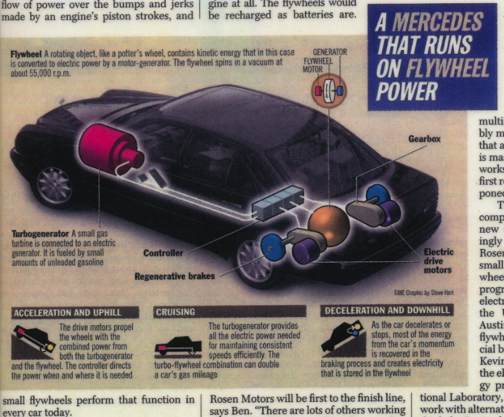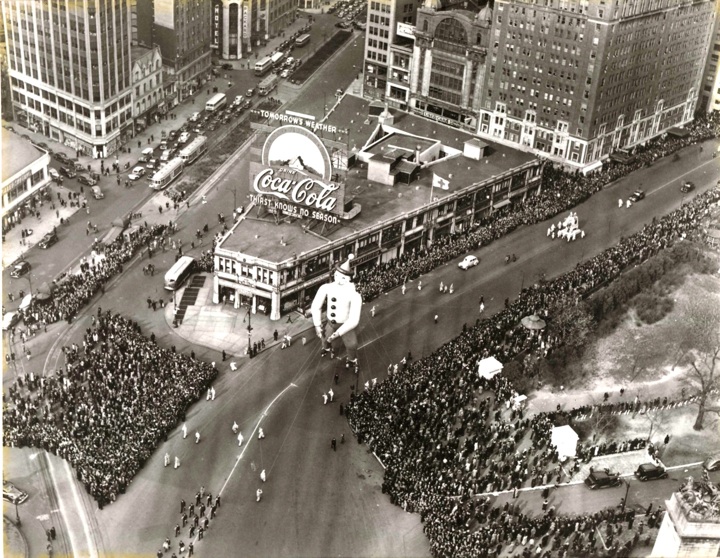ON THE ECONOMIC APPOINTMENTS
The praise from both left and right for Obama’s initial slate of financial appointments has been almost unanimously effusive. But not from me. My main complaint is that a great opportunity was missed – the appointment of Joseph Stiglitz to either Treasury Secretary (instead of Tim Geithner) or head of the National Economic Council (instead of Larry Summers). Apparently, because of decade-old bad blood between Summers and Stiglitz, there was no room for Stiglitz as part of the new economic team.
The best argument for a Stiglitz role was proffered by Michael Hirsh last week in a Newsweek online piece. Here are a few excerpts:
“Stiglitz, more than anyone on the Washington scene, was the biggest fly in the ointment of “free-market fundamentalism” pressed on the world in the 90s by Summers, Geithner and their mentor, former Treasury Secretary Robert Rubin – advice that has now contributed to the worst financial crisis since the Great Depression.”
“Stiglitz has been the leading voice opposed to the mindless liberalization of capital flows that brought us to where we are today.”
“In a spate of books, essays and speeches dating from the early 90s, Stiglitz denounced Rubin’s support for repeal of the Glass-Steagall act, which separated commercial from investment banking.”
“As far back as 1990, Stiglitz argued in a paper against securitizing mortgages and selling them…”
Yesterday, even the New York Times’ Frank Rich, who has been wildly supportive of Obama, chimed in: “In our current financial quagmire, there have also been those who had the wisdom to sound alarms before Rubin, Summers or Geithner did. Among them were Joseph Stiglitz…”
An excellent illustration of Stiglitz’s understanding of the economic crisis can be gleaned from a piece he wrote in the December 2008 Vanity Fair. (Because of the magazine’s long lead time, the essay was written months earlier, before Lehman Brothers, AIG and the bailout.)
As Michael Hirsh concluded his essay, “Obama has made a point of declaring that he wants a dissonant voices in his administration. So why not Joe Stiglitz?”
Why not, indeed?
ON THE ELECTION RESULTS
In my November 3 post, the day before the election, I made a prediction of the electoral vote count. My guess was predicated on the assumption that all nine battleground states – Colorado, Florida, Indiana, Missouri, Nevada, North Carolina, Ohio, Pennsylvania, and Virginia – would swing to Obama. The other 42 contests (including Washington, DC) were pretty well decided well in advance of the election and needed no crystal ball. My forecast called for Obama to receive 375 electoral votes and McCain 163 (270 were needed to win). The final results -- Obama received 365 votes. I was 10 votes too optimistic
I made two mistakes. The lesser of my errors was in the Nebraska outcome. Nebraska is one of two states that does not require all its electoral votes to go to the popular vote winner (Maine is the other). Obama received one of its five electoral votes.
The greater of my errors lay in Missouri, a state which prides itself on almost always having voted for the winning presidential candidate. It didn’t this time. McCain received 3,903 more votes than Obama out of a total of almost three million cast. But in a development harking back to the Florida vote in the 2000 election, Ralph Nader was a spoiler once again; he got 17,813 votes in Missouri, over four times McCain’s winning margin. It’s not a stretch to assume that most of the Nader votes would have gone to Obama had Nader not entered the race. Missouri’s 11 electoral votes went to McCain.
So except for the Nader effect and my ignoring that Nebraska had proportional electoral voting, I would have come up with the exact electoral outcome. But as we say in golf, “woulda, coulda, shoulda.”

ON AUTOMOBILES
General Motors On April 14, 1997, my brother Harold and I met for dinner at the Townsend Hotel in Birmingham, Michigan, with Rick Wagoner (now the embattled CEO of General Motors) and several of his associates. The purpose of our meeting was to discuss the Rosen Motors hybrid electric powertrain that we had developed for use into passenger automobiles. We had hoped that General Motors would consider it for one of their models, especially since we had used a Saturn as one of our test beds (the other was a Mercedes.) Alas, we didn’t get the order, but the meal was delicious and the company gracious.
Flash forward to the New York Times of December 6, 2008. In a quote from their lead director, George Fisher: “We were late on hybrids… That’s probably a mistake, in retrospect.”
A really big mistake.

Diagram from Time magazine of the Rosen Motors hybrid-electric powertrain
Tesla Motors For the last few years, Tesla has been the darling of the press, and even of the blogosphere, includingThrough Rosen-colored Glasses. But now that the company is shipping its Tesla Roadster sports car – over 100 have been delivered to customers -- some of these erstwhile admirers are now trying to knock the company off the pedestal they put it on. Build ‘em up, tear ‘em down.
A few weeks ago, Daniel Lyons of Newsweek took some shots at the company: “A classic Silicon Valley product – it’s late and over budget, has gone through loads of redesigns, still has bugs and, at $109,000, cost more than originally planned.” I’m shocked, shocked. I don’t know why inventors can’t create world-changing innovations on time, on budget and bug-free. Maybe it’s not easy.
Then a week ago, Randall Stross of the New York Times piled on with a snide, negative view of the company’s prospects. (“…woefully immature technology…don’t-even-ask expensive…not much more than a functioning concept car…”)
How familiar this all seems to me. On the one hand we have entrepreneurs that are killing themselves to bring new technology and new products to market, and in this case to revolutionize a century-old industry that has embarrassingly lagged technologically and ecologically. These entrepreneurs may succeed, or they may not – they understand this going into the fray. But they’re busting their butts trying to change the world.
And then we have the “observers,” those who opine from the outside. Those who can, do; those who can’t, opine. It reminds me of the famous quote by “Engine” Charlie Wilson, who ran the Defense Department during the Eisenhower years. Fed up with outside criticism about his managing of the Department, he offered this observation: “I always liked bird dogs better than kennel dogs myself – you know, the ones that will get out and hunt for food rather than sit on their fannies and yelp.”
Let’s hear it for the bird dogs.
ON MICROJETS
One bird-dog that’s having a difficult time now is Eclipse Aviation. Even after raising almost $1 billion in private funds over the last decade, the company ran out of money and was forced to declare bankruptcy last month. It’s continuing to operate in bankruptcy, and its assets will probably be purchased at auction by its chairman’s affiliated European company and then continue to manufacture. But it’s a sad illustration of how difficult it is for an upstart to penetrate an established industry, even a billion-dollar upstart. And it’s even more difficult in the midst of a world economic crisis.
ON PET PEEVES
How about this one? You check into a hotel and there is a brand-new flat-screen television set. That’s the good news. The bad news is that most of the programming on it is transmitted in the low-definition aspect ratio of 4x3. The TV, however, is set to stretch the image to the high-definition aspect ratio of 16x9. So unless you’re getting a high def signal, you’ll be looking at a lot of horizontally stretched fat faces and fat bodies. It drives me nuts. Sometimes the remote control can correct this, and sometimes the hotel’s engineer can do it, but more often than not I’m faced with staring at a distorted image.
To illustrate, look at these images. The first one is a 4x3 image shown in the proper aspect ratio. The second takes the 4x3 image and stretches it horizontally to fill the 16x9 screen on the wide-screen TV set. Most of you think of Obama as lean; not those of you who see him on the typical hotel room television set.


A second pet peeve relates to adjectives that journalists sometimes use in describing my getting longer in the tooth. Often, they’re unobjectionable or euphemistic words – “veteran,” “long-serving,” “experienced.” Now that I’m a former person and am rarely interviewed, it’s no longer much of an issue.
But then the December 2008 Harper’s Magazine arrives in the mail, and, being right on top of the breaking news, it carries a piece on the New York Philharmonic’s historic February trip to North Korea -- only 10 months after the fact! In any event, look at the adjective they use to describe me:
“In the middle of the room was Benjamin M. Rosen, an elderly man with a cheeky smile...”
Now, I ask you, can an elderly person blog? (BTW, I sort of liked “cheeky.”)
ON iPhone APPLICATIONS
For those of you with iPhones, consider adding these free applications: Shazam and Google Mobile App. Shazam miraculously recognizes and identifies virtually every recorded piece in the popular genre after listening to a 13-second sample of the music.
Google Mobile App performs a voice search. Instead of typing in your search, you simply say the search words, and shazam! -- oops, that’s the other app -- there is the search result on the screen (most of the time, anyway). I’d characterize both programs as remarkable and leading candidates for “how do they do that?”
ON ARCHITECTURAL PROGRESS, 1941 TO 2008
The 52-story glass-and-steel building that we live in at the foot of Central Park West was formerly, as most New Yorkers know, the Gulf +Western building. But what was there before the Gulf+Western building? Here’s the answer:

Columbus Circle, New York, photographed December 2008

Columbus Circle, New York, photographed Thanksgiving 1941
ON ART
Donna has been heavily involved for the last year with Prospect.1, a new biennial that opened in New Orleans November 1 and runs through mid-January. It is the largest biennial of international contemporary art ever organized in the United States and is expected to provide a healthy boost to New Orleans tourism. It should also enhance the perception of the city as a cultural center with a breadth that extends well beyond jazz. Indeed, over 80 artists from around the world are showing their works in 30 different venues around the city -- museums, historic buildings, and found sites throughout the city.
If you’re looking for an excuse to go to New Orleans, consider the Prospect .1 biennial. BTW, it’s free.
I took a lot of photographs of the art on display there, and many of the national media and art publications have featured these works in the last couple of months. But what hasn’t been published are scenes from the opening party held on Halloween at Antoine’s restaurant. Over 800 people (I didn’t know the restaurant could hold that many people) in formal attire, in casual attire, in costume, in masks, in whatever – it was quite an evening. Laissez les bon temps rouler!

















The praise from both left and right for Obama’s initial slate of financial appointments has been almost unanimously effusive. But not from me. My main complaint is that a great opportunity was missed – the appointment of Joseph Stiglitz to either Treasury Secretary (instead of Tim Geithner) or head of the National Economic Council (instead of Larry Summers). Apparently, because of decade-old bad blood between Summers and Stiglitz, there was no room for Stiglitz as part of the new economic team.
The best argument for a Stiglitz role was proffered by Michael Hirsh last week in a Newsweek online piece. Here are a few excerpts:
“Stiglitz, more than anyone on the Washington scene, was the biggest fly in the ointment of “free-market fundamentalism” pressed on the world in the 90s by Summers, Geithner and their mentor, former Treasury Secretary Robert Rubin – advice that has now contributed to the worst financial crisis since the Great Depression.”
“Stiglitz has been the leading voice opposed to the mindless liberalization of capital flows that brought us to where we are today.”
“In a spate of books, essays and speeches dating from the early 90s, Stiglitz denounced Rubin’s support for repeal of the Glass-Steagall act, which separated commercial from investment banking.”
“As far back as 1990, Stiglitz argued in a paper against securitizing mortgages and selling them…”
Yesterday, even the New York Times’ Frank Rich, who has been wildly supportive of Obama, chimed in: “In our current financial quagmire, there have also been those who had the wisdom to sound alarms before Rubin, Summers or Geithner did. Among them were Joseph Stiglitz…”
An excellent illustration of Stiglitz’s understanding of the economic crisis can be gleaned from a piece he wrote in the December 2008 Vanity Fair. (Because of the magazine’s long lead time, the essay was written months earlier, before Lehman Brothers, AIG and the bailout.)
As Michael Hirsh concluded his essay, “Obama has made a point of declaring that he wants a dissonant voices in his administration. So why not Joe Stiglitz?”
Why not, indeed?
ON THE ELECTION RESULTS
In my November 3 post, the day before the election, I made a prediction of the electoral vote count. My guess was predicated on the assumption that all nine battleground states – Colorado, Florida, Indiana, Missouri, Nevada, North Carolina, Ohio, Pennsylvania, and Virginia – would swing to Obama. The other 42 contests (including Washington, DC) were pretty well decided well in advance of the election and needed no crystal ball. My forecast called for Obama to receive 375 electoral votes and McCain 163 (270 were needed to win). The final results -- Obama received 365 votes. I was 10 votes too optimistic
I made two mistakes. The lesser of my errors was in the Nebraska outcome. Nebraska is one of two states that does not require all its electoral votes to go to the popular vote winner (Maine is the other). Obama received one of its five electoral votes.
The greater of my errors lay in Missouri, a state which prides itself on almost always having voted for the winning presidential candidate. It didn’t this time. McCain received 3,903 more votes than Obama out of a total of almost three million cast. But in a development harking back to the Florida vote in the 2000 election, Ralph Nader was a spoiler once again; he got 17,813 votes in Missouri, over four times McCain’s winning margin. It’s not a stretch to assume that most of the Nader votes would have gone to Obama had Nader not entered the race. Missouri’s 11 electoral votes went to McCain.
So except for the Nader effect and my ignoring that Nebraska had proportional electoral voting, I would have come up with the exact electoral outcome. But as we say in golf, “woulda, coulda, shoulda.”

ON AUTOMOBILES
General Motors On April 14, 1997, my brother Harold and I met for dinner at the Townsend Hotel in Birmingham, Michigan, with Rick Wagoner (now the embattled CEO of General Motors) and several of his associates. The purpose of our meeting was to discuss the Rosen Motors hybrid electric powertrain that we had developed for use into passenger automobiles. We had hoped that General Motors would consider it for one of their models, especially since we had used a Saturn as one of our test beds (the other was a Mercedes.) Alas, we didn’t get the order, but the meal was delicious and the company gracious.
Flash forward to the New York Times of December 6, 2008. In a quote from their lead director, George Fisher: “We were late on hybrids… That’s probably a mistake, in retrospect.”
A really big mistake.

Diagram from Time magazine of the Rosen Motors hybrid-electric powertrain
Tesla Motors For the last few years, Tesla has been the darling of the press, and even of the blogosphere, includingThrough Rosen-colored Glasses. But now that the company is shipping its Tesla Roadster sports car – over 100 have been delivered to customers -- some of these erstwhile admirers are now trying to knock the company off the pedestal they put it on. Build ‘em up, tear ‘em down.
A few weeks ago, Daniel Lyons of Newsweek took some shots at the company: “A classic Silicon Valley product – it’s late and over budget, has gone through loads of redesigns, still has bugs and, at $109,000, cost more than originally planned.” I’m shocked, shocked. I don’t know why inventors can’t create world-changing innovations on time, on budget and bug-free. Maybe it’s not easy.
Then a week ago, Randall Stross of the New York Times piled on with a snide, negative view of the company’s prospects. (“…woefully immature technology…don’t-even-ask expensive…not much more than a functioning concept car…”)
How familiar this all seems to me. On the one hand we have entrepreneurs that are killing themselves to bring new technology and new products to market, and in this case to revolutionize a century-old industry that has embarrassingly lagged technologically and ecologically. These entrepreneurs may succeed, or they may not – they understand this going into the fray. But they’re busting their butts trying to change the world.
And then we have the “observers,” those who opine from the outside. Those who can, do; those who can’t, opine. It reminds me of the famous quote by “Engine” Charlie Wilson, who ran the Defense Department during the Eisenhower years. Fed up with outside criticism about his managing of the Department, he offered this observation: “I always liked bird dogs better than kennel dogs myself – you know, the ones that will get out and hunt for food rather than sit on their fannies and yelp.”
Let’s hear it for the bird dogs.
ON MICROJETS
One bird-dog that’s having a difficult time now is Eclipse Aviation. Even after raising almost $1 billion in private funds over the last decade, the company ran out of money and was forced to declare bankruptcy last month. It’s continuing to operate in bankruptcy, and its assets will probably be purchased at auction by its chairman’s affiliated European company and then continue to manufacture. But it’s a sad illustration of how difficult it is for an upstart to penetrate an established industry, even a billion-dollar upstart. And it’s even more difficult in the midst of a world economic crisis.
ON PET PEEVES
How about this one? You check into a hotel and there is a brand-new flat-screen television set. That’s the good news. The bad news is that most of the programming on it is transmitted in the low-definition aspect ratio of 4x3. The TV, however, is set to stretch the image to the high-definition aspect ratio of 16x9. So unless you’re getting a high def signal, you’ll be looking at a lot of horizontally stretched fat faces and fat bodies. It drives me nuts. Sometimes the remote control can correct this, and sometimes the hotel’s engineer can do it, but more often than not I’m faced with staring at a distorted image.
To illustrate, look at these images. The first one is a 4x3 image shown in the proper aspect ratio. The second takes the 4x3 image and stretches it horizontally to fill the 16x9 screen on the wide-screen TV set. Most of you think of Obama as lean; not those of you who see him on the typical hotel room television set.


A second pet peeve relates to adjectives that journalists sometimes use in describing my getting longer in the tooth. Often, they’re unobjectionable or euphemistic words – “veteran,” “long-serving,” “experienced.” Now that I’m a former person and am rarely interviewed, it’s no longer much of an issue.
But then the December 2008 Harper’s Magazine arrives in the mail, and, being right on top of the breaking news, it carries a piece on the New York Philharmonic’s historic February trip to North Korea -- only 10 months after the fact! In any event, look at the adjective they use to describe me:
“In the middle of the room was Benjamin M. Rosen, an elderly man with a cheeky smile...”
Now, I ask you, can an elderly person blog? (BTW, I sort of liked “cheeky.”)
ON iPhone APPLICATIONS
For those of you with iPhones, consider adding these free applications: Shazam and Google Mobile App. Shazam miraculously recognizes and identifies virtually every recorded piece in the popular genre after listening to a 13-second sample of the music.
Google Mobile App performs a voice search. Instead of typing in your search, you simply say the search words, and shazam! -- oops, that’s the other app -- there is the search result on the screen (most of the time, anyway). I’d characterize both programs as remarkable and leading candidates for “how do they do that?”
ON ARCHITECTURAL PROGRESS, 1941 TO 2008
The 52-story glass-and-steel building that we live in at the foot of Central Park West was formerly, as most New Yorkers know, the Gulf +Western building. But what was there before the Gulf+Western building? Here’s the answer:

Columbus Circle, New York, photographed December 2008

Columbus Circle, New York, photographed Thanksgiving 1941
ON ART
Donna has been heavily involved for the last year with Prospect.1, a new biennial that opened in New Orleans November 1 and runs through mid-January. It is the largest biennial of international contemporary art ever organized in the United States and is expected to provide a healthy boost to New Orleans tourism. It should also enhance the perception of the city as a cultural center with a breadth that extends well beyond jazz. Indeed, over 80 artists from around the world are showing their works in 30 different venues around the city -- museums, historic buildings, and found sites throughout the city.
If you’re looking for an excuse to go to New Orleans, consider the Prospect .1 biennial. BTW, it’s free.
I took a lot of photographs of the art on display there, and many of the national media and art publications have featured these works in the last couple of months. But what hasn’t been published are scenes from the opening party held on Halloween at Antoine’s restaurant. Over 800 people (I didn’t know the restaurant could hold that many people) in formal attire, in casual attire, in costume, in masks, in whatever – it was quite an evening. Laissez les bon temps rouler!














